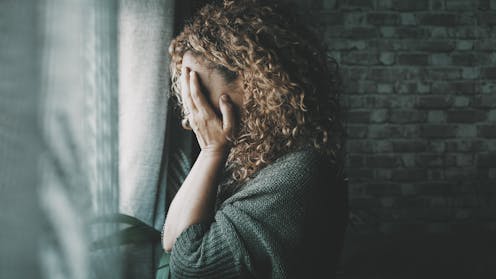Housing stress takes a toll on mental health. Here’s what we can do about it
- Written by Ehsan Noroozinejad, Senior Researcher and Sustainable Future Lead, Urban Transformations Research Centre, Western Sydney University

Australia’s housing crunch is no longer just an economic issue. Research clearly shows people who face housing insecurity are more likely to experience mental ill-health.
For this reason, secure housing must sit at the heart of any mental health plan.
Australia’s housing shortfall
Rents rose so fast in 2024 that Australia’s Rental Affordability Index now labels all major cities and regional areas “critically unaffordable” for people relying on benefits such as JobSeeker or a pension.
Vacancy rates hover near 1%, the lowest in decades. Mortgage costs chew the biggest slice of income since the mid-1980s.
On Census night in 2021, 122,494 Australians were homeless. Of these, more than 7,600 people slept rough, and nearly one-quarter were aged 12–24.
Data from homelessness services and headcounts of rough sleepers since 2021 suggest today’s figure is higher.
Read more: Why is it so hard for everyone to have a house in Australia?
Housing stress quickly turns into mental distress
In a national survey, four in five renters said they spend more than 30% of their income on housing.
This 30% threshold is important. A 2025 study that followed more than 10,000 Australian renters found mental health drops fast once housing costs exceed the 30% mark. Missing a rental payment was linked to a further drop in mental health.
Earlier research has similarly found that among low- to moderate-income households, when housing costs exceed 30% of income, mental-health scores fall compared with similar households who spend less than 30%.
Another recent Australian survey found 38% of private renters feel their housing circumstances harm their mental health, versus 23% of owner-occupiers. This is driven by a mix of housing insecurity (such as short leases and eviction risk) and poor housing conditions (for example, cold homes or mould).
Meanwhile, helplines have reported cost-of-living pressures, including housing insecurity and homelessness, are driving an increasing number of calls.
Who is at highest risk?
In a sense, the housing ladder doubles as a mental health ladder.
Homeowners, with long-term security, sit on the top rung.
Private renters arguably ride the roughest road. Six-month leases, “no-grounds” evictions and “rent bidding” (where applicants may feel compelled to offer above the advertised rent to beat other applicants) keep people on edge.
Social housing residents often start with bigger challenges (43% live with mental health issues), but low rent and fixed leases steady the ship.
People with no stable home face the steepest climb. One review looking at people experiencing homelessness in high-income countries found 76% had a current mental illness.
This is likely linked in a large part to a feeling psychologists call “learned helplessness”. After the tenth rejected rental application – or the 15th, or the 20th – people ask “why keep trying?”. Motivation drops, and depression rises.
What’s more, a stable home makes it easier to do things like hold down a job or finish TAFE. Housing insecurity can therefore compound other problems such as unemployment, which are also linked to poor mental health.
What can we do about it?
Mental ill-health already drains roughly A$220 billion from Australia’s economy each year in lost productivity and health-care costs.
Housing stress piles extra costs onto the health-care system: more GP visits, more ambulance call-outs, more pressure on emergency departments.
Meanwhile, homeless shelters turn people away daily because beds are full.
This is without even accounting for the physical health effects of poor quality housing, including illnesses caused or exacerbated by problems such as mould, damp and cold.
All this means fixing the housing crisis is likely to generate savings for the health-care budget.
There are several ways we can do this.
1. Build more social housing
As of June 2024, about 4% of Australian households lived in social housing, equating to roughly 452,000 dwellings nationwide.
The National Housing Supply and Affordability Council’s State of the Housing System 2025 report recommends boosting social housing to 6%, with a long-term target of 10% of all homes. This would be a major step to cool the market and cut mental distress.
2. Protect renters
This should include ending no-grounds evictions, capping rent hikes to wage growth, and lifting Commonwealth Rent Assistance.
3. Link housing to health policy
On this point, Australia can take lessons from abroad. Finland, for example, has made “Housing First” national policy. This approach gives people experiencing long-term homelessness a permanent apartment and access to support. It has cut rough sleeping significantly.
Meanwhile, Aotearoa New Zealand’s Homelessness Action Plan aims to make homelessness “rare, brief and non-recurring” by funding Housing First in every region.
A trial in Canada gave more than 2,000 participants across several cities experiencing homelessness and mental illness a permanent home plus access to voluntary support.
Evidence from Canada shows Housing First keeps people housed and reduces demand on emergency and hospital services. Pilots in the United Kingdom are indicating similar benefits.
While there have been some promising programs in parts of Australia, there’s more to do.
Secure housing targets should sit inside the National Mental Health and Suicide Prevention Agreement. On the flip side, Australia is currently drafting a National Housing and Homelessness Plan. Mental health goals should be incorporated into that plan.
Just as clean water prevents disease and seat belts cut road deaths, a stable, affordable home is vital for mental health. Without bold action, we face a long-term social crisis.
This article is part of a series, Healthy Homes.
Authors: Ehsan Noroozinejad, Senior Researcher and Sustainable Future Lead, Urban Transformations Research Centre, Western Sydney University



















